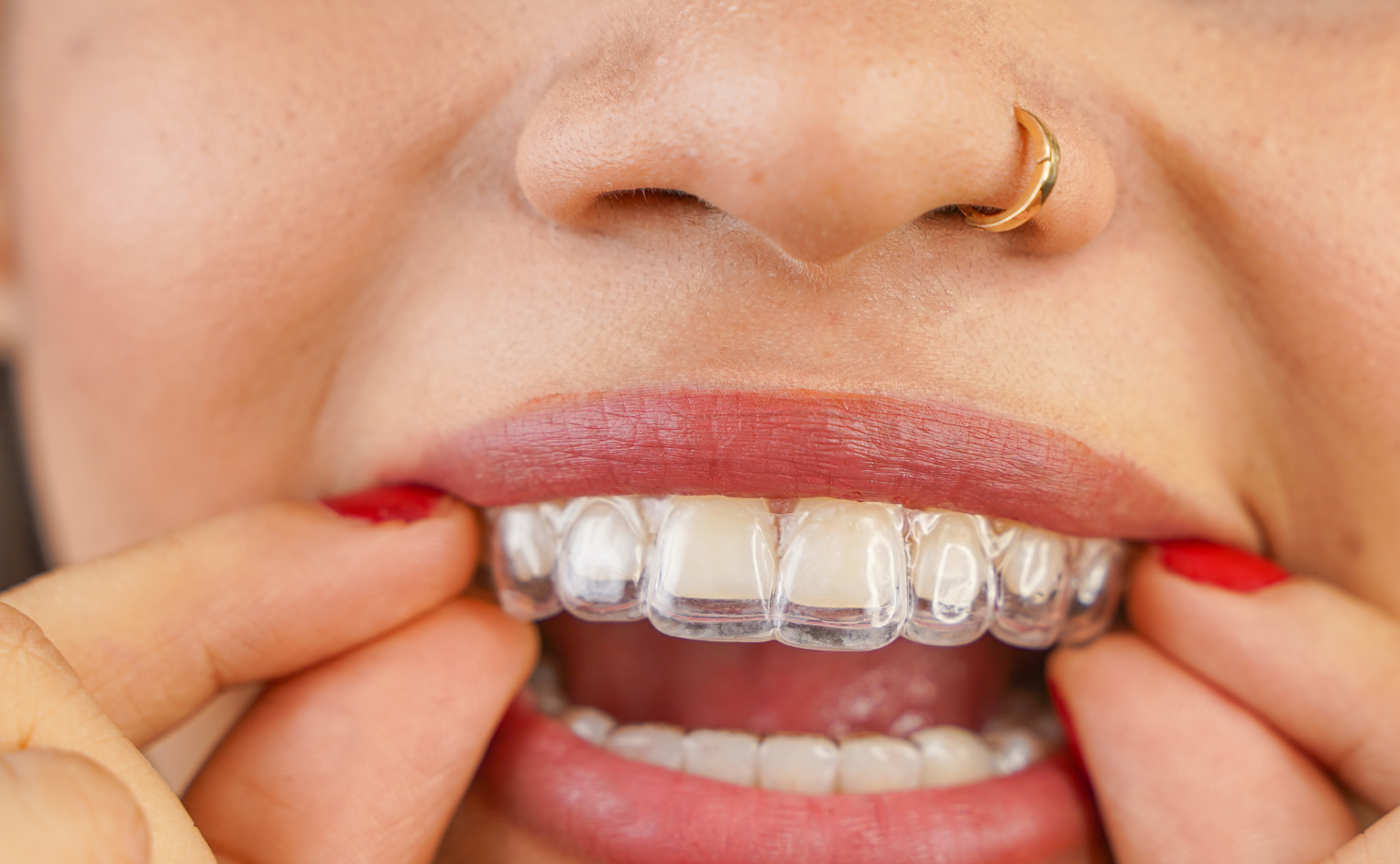Everything You Need To Know About Getting A Root Canal
Key Takeaways
- Root canals are safe, effective, and help save your natural tooth.
- Modern techniques make the procedure nearly painless for most patients.
- Recovery is quick; most people resume normal activities within a day.
- Costs vary, but insurance often covers a significant portion.
- Early treatment prevents complications and protects your long-term oral health.
Root Canal Treatment: What to Expect Before, During, and After
For years, root canals were painful and intimidating procedures, something to avoid if possible. This fear often came from outdated techniques and stories passed down through generations. But modern dentistry has changed that entirely. Thanks to advances in anesthesia, digital imaging, and precision tools, today’s root canals are safe, efficient, and often no more uncomfortable than getting a routine filling.
The goal of a root canal is to remove infection and pain while saving your natural tooth. It’s a restorative treatment, not a last resort. Research shows that root canals have high long-term success rates when performed correctly. For patients, this means maintaining the strength and appearance of their natural smile, preventing tooth loss, and avoiding more expensive treatments like implants in the future.
If you're experiencing tooth pain or sensitivity, seeing a cosmetic dentist early can make all the difference. Acting quickly not only relieves discomfort but also helps preserve your natural tooth structure, an essential step toward maintaining a healthy, confident smile.
Root Canal Meaning and Why You Need One
When the inside of a tooth is infected or very swollen, a root canal is a dental treatment used to treat it. Each tooth has a soft tissue, at the central part called pulp. It has nerves and blood vessels in it. When this pulp gets infected, which can happen because of deep decay, repeated dental work, a cracked tooth, or an injury, it can cause severe pain, sensitivity, and swelling. If left untreated, it can get worse and eventually lead to tooth loss.
A root canal removes the infected pulp, cleans the inside of the tooth thoroughly, and then seals it to prevent the problems from happening again. This stops the pain at its source and saves your natural tooth, which is almost always better than removing it. Common signs that you may need a root canal include lingering pain when chewing or drinking something hot or cold, darkening of the tooth, gum swelling, or even a pimple-like bump on the gums.
Needing a root canal often means that oral bacteria have reached deep into the tooth, which is why maintaining good oral hygiene is so important. Daily brushing, flossing, and regular dental checkups can help catch issues early, before they require more involved treatment.
Most root canal procedures take about 60 to 90 minutes and are completed in one or two visits, depending on the tooth and severity of the infection.
What to Do Before Your Appointment
Preparing for a root canal is simple, but a few smart steps can make the experience smoother and more comfortable.
- Eat a good meal before your appointment.
Since your mouth will be numb for a few hours afterward, it’s best to eat something filling beforehand. Stick to a balanced meal, nothing too hot or spicy, and drink plenty of water.
- Take prescribed medications (if any)
If your dentist has prescribed antibiotics or anti-inflammatory medication, take them exactly as directed. These medications help reduce infection and swelling before the procedure.
- Wear comfortable clothes
Wear comfortable, loose-fitting clothes and try to arrive a little early to your appointment so you’re not rushed.
- Ask about sedation if you’re anxious.
If you tend to feel nervous about dental work, let your dental team know in advance. Many offices offer sedation options or other ways to help you feel more at ease. Open communication with your dentist ensures a more relaxed and positive experience.
The Step-by-Step Process of Root Canal Procedure
The pain level during a root canal depends on several key factors: how severe the infection is, how sensitive the patient is to pain, and the skill of the dentist performing the procedure.
A study published in the Australian Endodontic Journal found that the majority of patients reported only mild or no pain during root canal treatment when modern techniques and proper anesthesia were used. The findings support the fact that, with skilled providers and updated protocols, root canals are far less painful than most people expect.
Before the Procedure
Before starting your root canal, your dentist or endodontist will perform a thorough evaluation of the tooth. This includes taking digital X-rays to assess the shape of the root canals, check for signs of infection in the surrounding bone, and determine the extent of internal damage.
During this stage, your dentist will also tap on the tooth, test for temperature sensitivity, and ask about your symptoms. Pain levels at this point can vary; if the tooth is severely infected, it may already be highly sensitive or even throbbing. In cases of intense inflammation or abscess, your dentist might prescribe antibiotics before the procedure to calm the infection and make treatment more comfortable.
The consultation is also the best time to ask questions or express concerns. Your provider will explain each step so you know what to expect, helping to reduce anxiety and build trust.
During the Procedure
Once you’re seated comfortably, the procedure begins with local anesthesia. This numbs the area completely, so while you’ll remain awake, you won’t feel pain. If you’re nervous or anxious, sedation options may also be available to help you stay calm.
For the tooth to stay clean and dry, a dental dam, a small sheet, is put around it. After that, your dentist will make a small cut in the top of the tooth to get to the broken or infected pulp. Using very fine instruments, your dentist will gently remove the infected pulp, thoroughly clean each root canal, and disinfect the space.
After cleaning, the canals are filled with a rubber-like material called gutta-percha. This seals the tooth from future infection. Finally, a temporary filling is placed to shield the area until your permanent crown is ready.
Most patients describe the pain during this stage as minimal, often rating it between 0 and 3 on a 10-point scale.
After the Procedure
After your root canal is finished, your dentist will review aftercare instructions and make sure you’re feeling comfortable. The treated tooth has been cleaned and sealed, and the source of the infection is gone. At this point, most patients feel immediate relief from the sharp, lingering pain they had before the procedure.
You may experience some mild to moderate discomfort for a few days as the area around the tooth heals. Common sensations include tenderness when chewing or sensitivity in the jaw. This discomfort usually falls between 2 and 5 on the pain scale and is easily managed with over-the-counter pain relievers like ibuprofen or acetaminophen. If pain increases or doesn’t begin to ease within a few days, be sure to contact your dentist for follow-up care.
Aftercare and Recovery: What to Expect After Your Root Canal
Recovery after a root canal is generally quick, and most people return to work or school the same day or the day after.
The numbness from local anesthesia usually wears off within 2 to 4 hours. It’s important to avoid eating during this time to prevent biting your tongue or cheek. Once the numbness fades, you can begin eating soft, cool, or room-temperature foods such as yogurt, mashed potatoes, applesauce, or soup. Avoid chewing on the treated side of your mouth for a few days, especially if the area feels sensitive.
You can resume your normal brushing and flossing routine the same day as the procedure, just be gentle around the treated tooth while it’s healing. Rinsing with warm salt water may also help reduce inflammation and soothe the gums.
If you did not receive sedation, you are safe to drive yourself home after the procedure. If sedation is used, you’ll need someone to accompany you.
Recovery Timeline
- Most patients experience mild tenderness for 2 to 5 days.
- Significant improvement is usually noticeable within 48 to 72 hours.
- Full healing of the surrounding tissue may take about one week, but discomfort continues to decrease each day.
When to Call Your Dentist
While root canal recovery is usually smooth, contact your dentist if you notice:
- Increasing or sharp pain after 3 days
- Swelling that worsens or doesn’t go down
- A feeling that your bite is uneven or uncomfortable
- Signs of infection, such as fever or foul taste
A few simple precautions and good oral hygiene can help ensure that your tooth heals properly and stays healthy long-term.
Root Canal vs. Extraction: Which Is Better
A root canal is designed to save your natural tooth by removing the infection and restoring its function. An extraction, on the other hand, removes the entire tooth and typically requires follow-up procedures, such as a dental implant, bridge, or partial denture, to fill the gap and prevent shifting of nearby teeth.
Below is a side-by-side comparison to help you understand how the two treatments differ:
| Root Canal | Tooth Extraction | |
|---|---|---|
| Goal | Save and preserve the natural tooth | Remove the infected or damaged tooth |
| Initial Cost | Moderate (usually $600–$1,500, depending on the tooth) | Lower upfront cost ($100–$300 for a simple extraction) |
| Long-Term Cost | Usually ends with sealing/filling | Higher if replacement is needed ($3,000+ for an implant) |
| Treatment Time | 1–2 appointments | One appointment (plus more if replacement is needed) |
| Recovery Time | 2–5 days of minor soreness | 1–2 weeks, depending on complexity |
| Pain After Procedure | Mild to moderate; manageable with OTC medication | Moderate to significant, especially if bone or surgical work |
| Restoration Needs | Tooth structure is preserved with minimal follow-up | Often requires a bridge, implant, or denture |
| Long-Term Oral Health | Better for jawbone and tooth alignment | It can lead to bone loss and neighboring teeth drifting |
Average Cost for a Root Canal
The cost of a root canal can vary significantly depending on which tooth is being treated and whether you have dental insurance. Root canals on front teeth are usually less expensive, while molars, which have more canals and are harder to access, tend to cost more.
Average Out-of-Pocket Costs in the U.S
Here's a breakdown of typical price ranges with and without dental insurance.
| Tooth Type | Without Insurance | With Insurance (Estimated 50%–80% Coverage) |
|---|---|---|
| Front Tooth (Incisor) | $620 – $1,100 | $124 – $550 |
| Premolar | $720 – $1,300 | $144 – $650 |
| Molar | $890 – $1,500+ | $178 – $750 |
Additional Factors That Affect the Price
Several other variables can influence how much you'll pay for a root canal beyond just the tooth location. These factors can cause the price to increase or decrease depending on your unique situation.
- Tooth Location: Molars cost more due to additional roots and complexity
- Dentist vs. Endodontist: Specialists (endodontists) may charge slightly more than general dentists
- Geographic Region: Urban areas and coastal states may have higher average treatment costs
- Need for Additional X-rays or Medications: Additional diagnostics, sedation, or antibiotics may increase the total fee
- Urgency/Emergency Care: Same-day or after-hours treatment may carry a higher price tag
Insurance and Payment Options
Most dental insurance plans cover 50% to 80% of the cost of a root canal, depending on your policy and whether your deductible is within your dental coverage. It's crucial to confirm:
- Your annual maximum coverage
- In-network vs. out-of-network benefits
- Whether a pre-treatment estimate is required
If you don’t have insurance, financing options like CareCredit can help make treatment more affordable. Many dental offices also offer in-house payment plans or membership programs.
Bottom Line
While the upfront cost of a root canal may seem high, it’s often more affordable than an extraction followed by an implant or bridge, which can cost $3,000 to $6,000 or more. By saving your natural tooth, you avoid complex restorations and protect the long-term health and alignment of your smile.
Final Thoughts: Don’t Fear the Root Canal
If you’ve been putting off treatment because you’re worried about pain or complexity, it’s time to rethink the root canal. Modern dentistry has made this once-dreaded procedure safe, highly effective, and far more comfortable than most people expect. In the hands of a skilled provider, a root canal can eliminate pain, stop infection, and help preserve your natural smile, often in just one or two visits.
Remember, acting early is the key. If you’re feeling sensitivity, discomfort, or swelling, don’t wait. The sooner you speak with your dentist, the more options you’ll have to save your tooth and avoid complications.
To support healing and make your experience as easy as possible, keep these helpful tips in mind:
- Avoid smoking. It slows down healing and increases the risk of complications.
- Keep all follow-up appointments. They’re essential to ensure your tooth is healing properly and to monitor for any issues.
- Maintain excellent oral hygiene. Brush twice a day, floss daily, and see your dentist regularly to prevent future infections or the need for another root canal.














